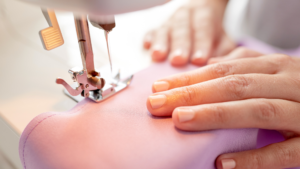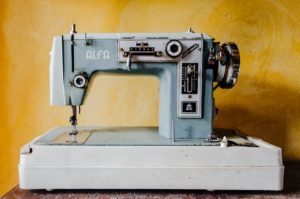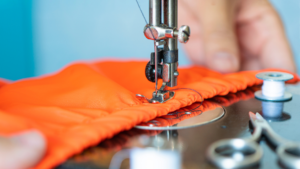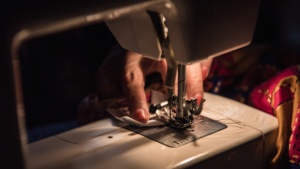Last Updated on September 17, 2021
When machines are not correctly cared for, they will start having different problems. In many situations, sewers could have avoided these problems with a bit of tender loving care. It may appear time-consuming, but it is vital to extend the machine’s life lifetime.
Keeping regular sewing machine maintenance is not hard at all. You only need to change the needles, clean and oil the machine, tight the screws and cover after every use. Lastly, the machine needs annual servicing.
When problems emerge, quick but effective maintenance can make all the difference. Sewers will save money and time by doing preventive maintenance. Here are some pointers for keeping your sewing machine clean and maintained.
Step-by-Step Sewing Machine Maintenance
You may have a sewing machine for beginners or for a seasoned pro. But regardless, having one of these machines is unquestionably an investment.
The best way to increase the life of a sewing machine is to take excellent care of it. One of the ways to do so is to always adhere to a regular maintenance schedule.
Some might say, “Nah! Annual servicing is enough.” But I assure you that mindset is not right at all.
1. Regularly Change The Needles
It’s easy to overlook something as seemingly unimportant as a needle, but it’s a vital consideration to keep in mind. Needles grow dull over time, whether used or not. This will cause fabric pulls, skipped stitches, looped threads, and even potential machine damage.
It’s easy to see why professionals recommend changing the needle after the completion of each project. Remember to choose a needle based on the weave and weight of the fabric you will stitch.
2. Adequately Oil The Machine
Oiling the equipment may become obsolete soon. Modern machinery (mainly electronic and computerized models) no longer need oiling. As a result, you should consult the handbook while deciding whether or not to use oil.
Most essential, always use sewing machine oil; most other oils are unsuitable since they are too thick and could clog the machine. For an experienced operator, a change in the machine’s sound is sufficient to determine if the machine requires oiling or not. Depending on the equipment, there are two ways to lubricate it.
The body of older machines has red holes surrounding a red ring. These are the areas that need to be oiled. Simply squirt a few drops into the perforations and wipe away the excess.
Follow the steps for oiling the machine:
- Turn off the power supply.
- Apply 1-2 drops of oil to the machine’s body’s series of holes.
- Run the machine for a few minutes without any thread or fabric in it to disperse the oil.
- Wipe the machine’s outer surface for any excess oil around the openings.
- With the machine threaded, sew a piece of cotton. This method will ensure that any extra oil is absorbed and does not ruin the cloth.
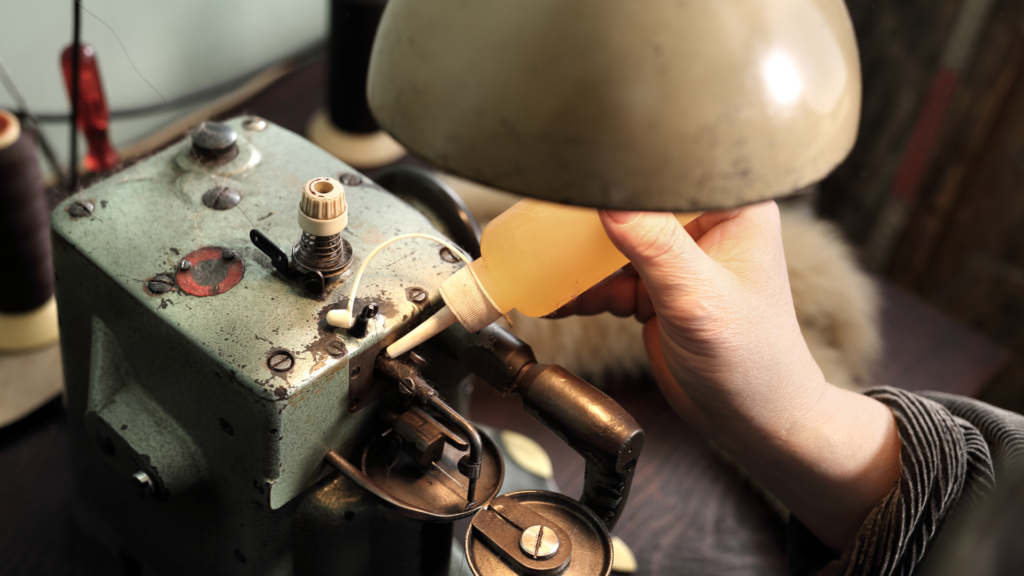
3. Always Cover Your Sewing Machine
Now that we’ve discussed the necessity of oiling, we’ll discuss how to protect your equipment against dust. The only efficient way to do this is to store your sewing machine under a dust cover. You may also do this by using a protective case while it is not in use.
Additionally, you must be highly cautious about lint accumulation. You can avoid this problem by sewing with a high-quality thread. You must also remember to unplug the machine and adequately dust the interior of the bobbin case.
When you finish a sewing project, you should use compressed air to remove lint and thread from tension discs, bobbin region, and feed dogs. But, the nozzle must always be at least 4 inches away from the machine. If you don’t do this, the sewing machine will be more susceptible to moisture accumulation.
You must be careful to follow this procedure. Even after cleaning your machine, the new thread will only reduce lint buildup and not end it.
Many people have resorted to blowing directly from their mouths. They don’t realize that this air contains moisture. It will speed up corrosion, which is something you don’t want.
4. Don’t Forget To Keep Tightening The Screws
Our sewing machine’s screws tend to loosen with time. Loose screws not only slow down the stitching process but can also result in mistakes. As a result, tighten the screws now and ensure the correct holding of the machine.
5. Clean The Machine But Not All At Once
You must follow the instructions in the user’s handbook that came with your sewing machine. Suppose you don’t clean one section of the machine at a time.
In that case, the sheer number of screws and parts can get perplexing. And believe us when we say that while the exterior of a sewing machine may appear simple, the interior can be sophisticated.
Keeping this in mind, we propose that you go on to the next part only once you’ve finished cleaning the one you’re working on now.
Here are some tips on cleaning your sewing machine effectively:
Read Your Instruction Manual
There are no two machines alike. It’s a big mistake to think you can simply take your machine out of the box and start sewing. The opening page of the manual says, “Read the directions before operating the equipment.”
You may find the safety guidelines and vital sections of the machine in the manual. Some manuals also include instructions for creating various stitch patterns and hemming procedures. Most manuals include a troubleshooting guide that will assist you in resolving any issues that may arise.
Before having your machine serviced, always refer to this advice. You can troubleshoot and fix most problems without having to spend a lot of money on repairs. Don’t worry if you misplace your handbook. You might be able to get a downloadable copy on the manufacturer’s website, depending on the brand and model.
Maintain Essential Parts of the Sewing Machine
There is not enough stressing on how vital it is to read the exact instructions for your system before attempting to clean it. Cleaning a classic domestic machine, for example, may differ from cleaning a modern computerized unit.
Cleaning a top-loading bobbin case differs from cleaning a front-loading bobbin case in a few ways. It all relies on the make and model of your vehicle. When you sew, dust from fabric fibers tends to get everywhere.
Most like to concentrate on areas where thread and fabric debris can easily accumulate and cause cleaning problems. Cleaning the common spaces listed below at least once a month should help keep things functioning smoothly:
- Needle shaft
- Feed dogs
- Hook/bobbin area
- Under needle plate
- Light surface cleaning
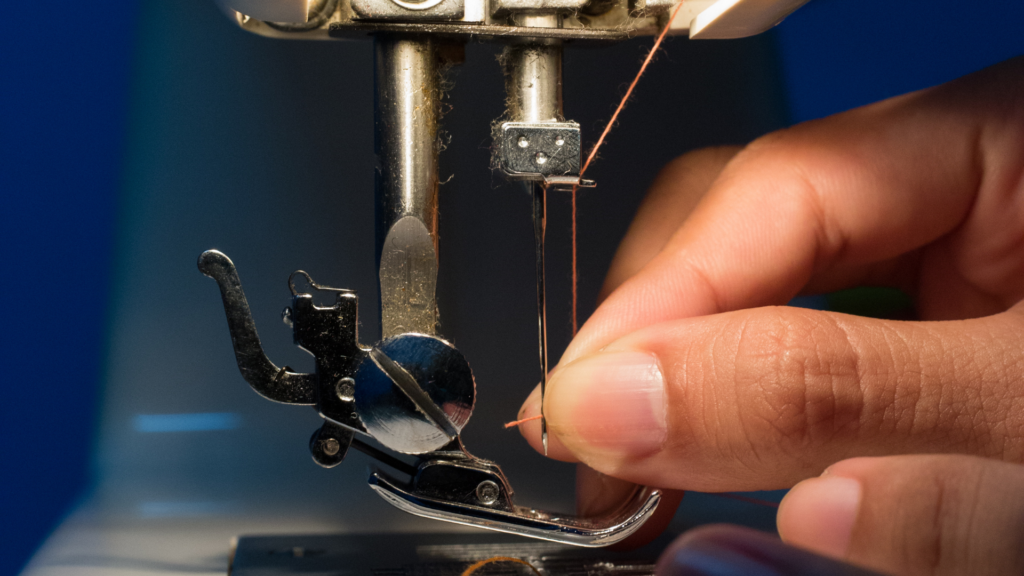
Opt For Annual Servicing
Even if you have a less expensive sewing machine, have it properly serviced at least once a year.
Professionals’ skills and experience in terms of timing and tension can be pretty beneficial to the machine. They also don’t clean the entire machine instead of focusing on the regions that require the most attention.
Importance Of Sewing Machine Maintenance
We have previously seen the consequences of machines that aren’t properly maintained. It’s also not pretty. Lack of lubrication has caused primary shaft failure in some machines and increased noise in others.
Lint buildup has ruined some tension units, and general wear has prompted replacing several parts in others. You can avoid these sewing machine issues with regular tune-ups.
A new hook damaged by years of sewing without service can cost up to $250. However, with appropriate care and maintenance, the damage could have been mended instead of replaced.
Preventative maintenance will solve the majority of lubrication issues. When your equipment seizes up, there will be a lot more work to be done as a result, which would not have happened if it had been given regular TLC.
How Often Should I Perform Maintenance On My Sewing Machine?
If you use your machine often, you should do regular maintenance – 2 or 3 times a week. But not the extensive maintenance such as oiling and servicing. I’m talking about cleaning the external machine parts, covering, and checking that there is no thread bunching.
You may, however, need to learn more about sewing machine maintenance. So the question is, how frequently should I have my machine serviced? It is not as simple to answer as you may believe. Of course, we’d love for everyone to bring their sewing machines in for service every six months (for a fee, of course! ), but that simply isn’t the case.
Several factors determine the frequency with which you require servicing:
How Frequently Do You Use Your Machine?
If you use your sewing machine for patchwork quilting or thick sewing materials, you may need to service it more frequently. This will owe to lint buildup and potential tension and timing concerns.
Do you perform any maintenance on your machine? If you maintain your machine clean, change your needle, oil it as needed, and store it in a warm, dry location, you can go longer between services.
But, keep in mind that keeping your machine clean does not imply it will never need any servicing. A good sewing machine service goes beyond cleaning the machine.

How Old Is Your Machine
The older it is, the more care it may need. It may seem self-evident, yet it is true. Older machines need more lubrication to function, and they do have parts that wear out over time.
I’ve seen several specific models that wear down faster than others. I’ve seen a lot of them with significant problems that shouldn’t have happened with frequent servicing.
Listen To Your Machine
Remember the most crucial aspect, pay attention to your machine. Get to know your machine’s sound and handling characteristics. Here are signs that it needs servicing:
- It starts to sound clanky or squeaky
- The handwheel feels tighter as you turn it
- You’re having difficulties regulating your tension.
If you are not expecting to use the equipment for an extended period, have it serviced. Doing so will make it easier when you do.
So, since there isn’t a clear answer, we’ll stick to the basic rule of thumb for most’ standard’ stitching. Every 12-18 months, your machine needs special servicing. Consider getting your machine serviced if you detect a change in the tone of your machine.
Final Words
It is critical to perform maintenance to your sewing machine regularly. A well-maintained machine will likely work more smoothly. It can also help you avoid aggravating, time-consuming, and costly issues in the future.
Since there are so many different sewing machine models, this post is for a general overview. Consult your machine’s manual for precise maintenance requirements.
On a final note, if you need your sewing machine’s manual, go to the manufacturer’s website. Old manuals are frequently available for download or purchase.
Happy sewing!

![Read more about the article How To Unfreeze A Sewing Machine: A Comprehensive Guide [2023]](https://www.sewkitkit.com/wp-content/uploads/2021/08/machine-3-300x169.png)

